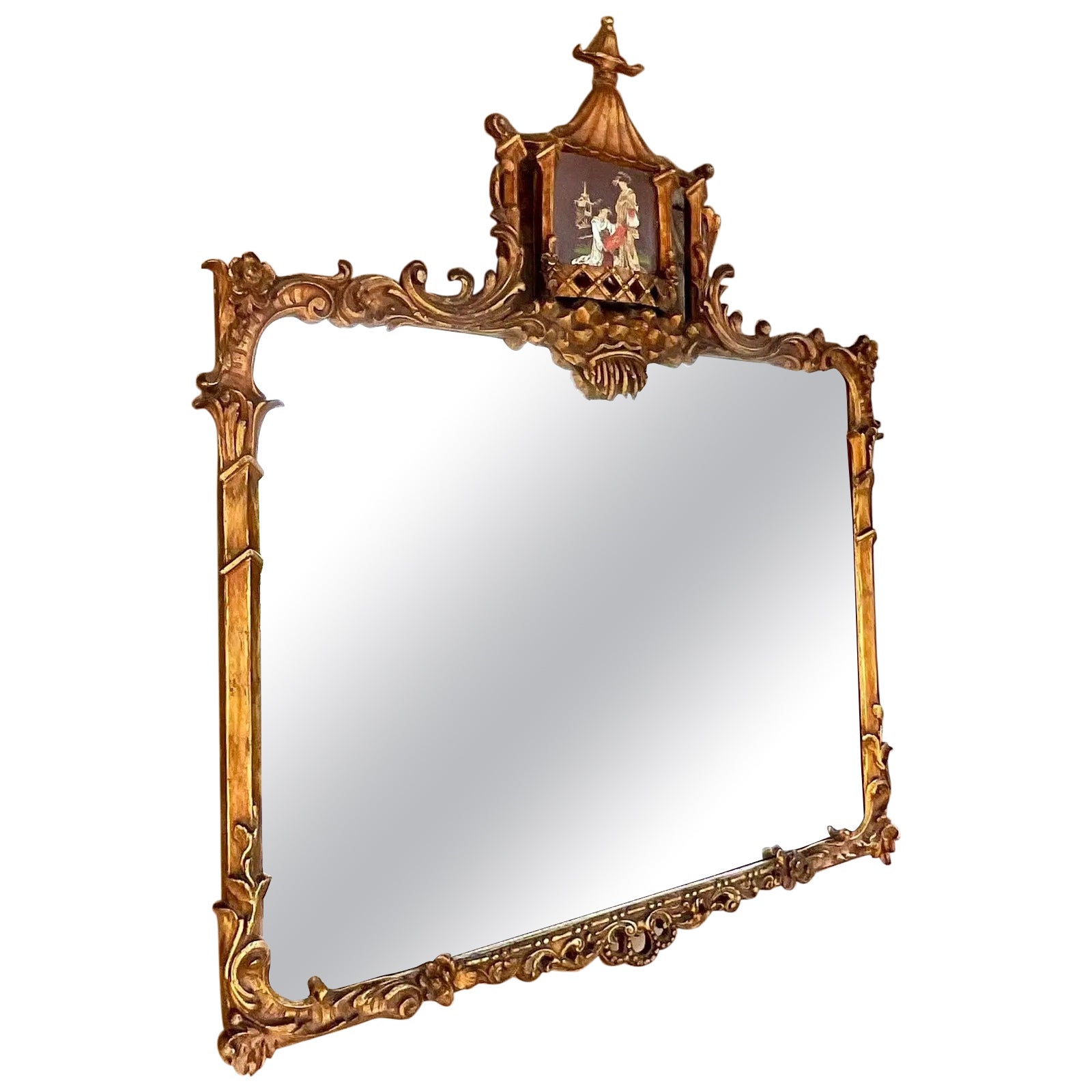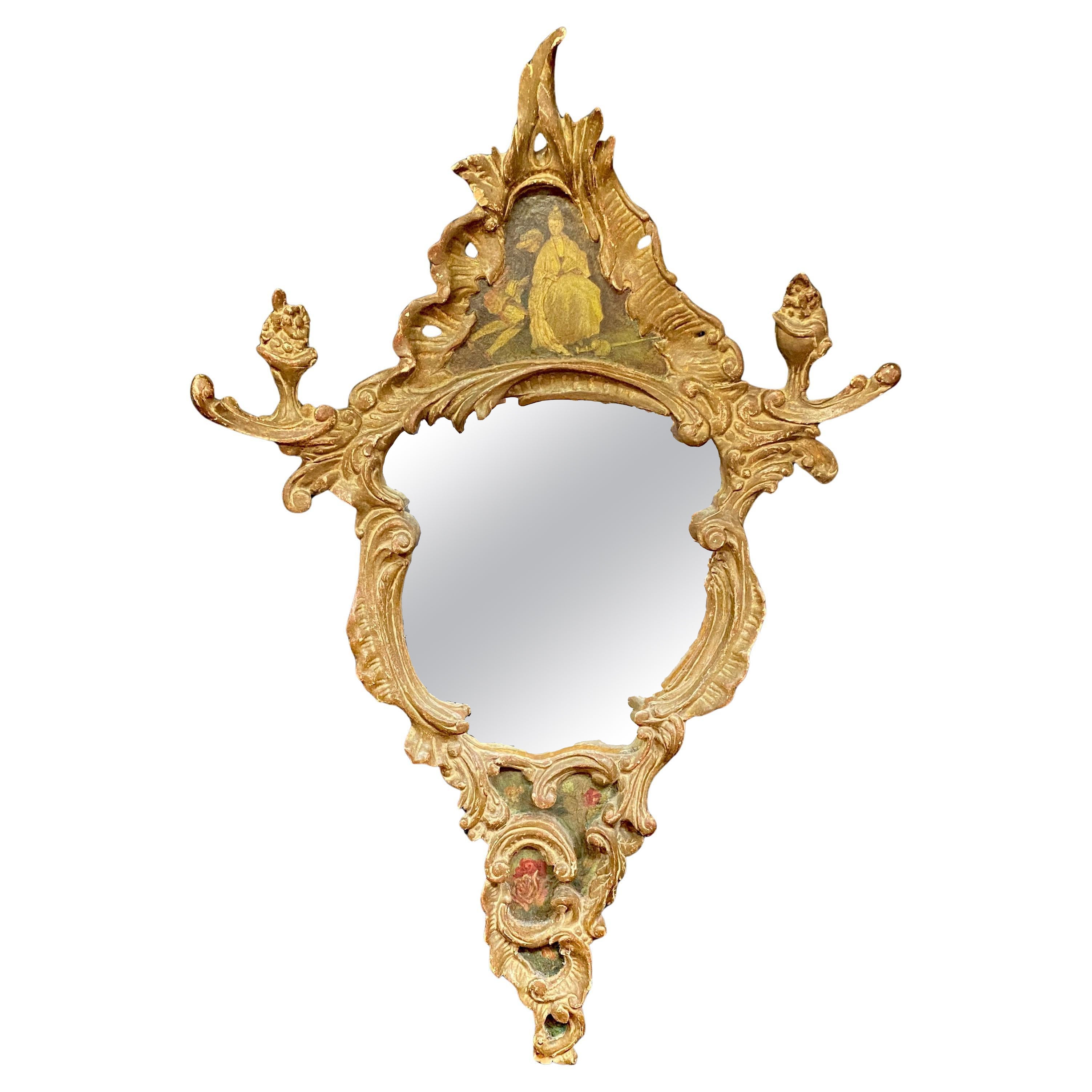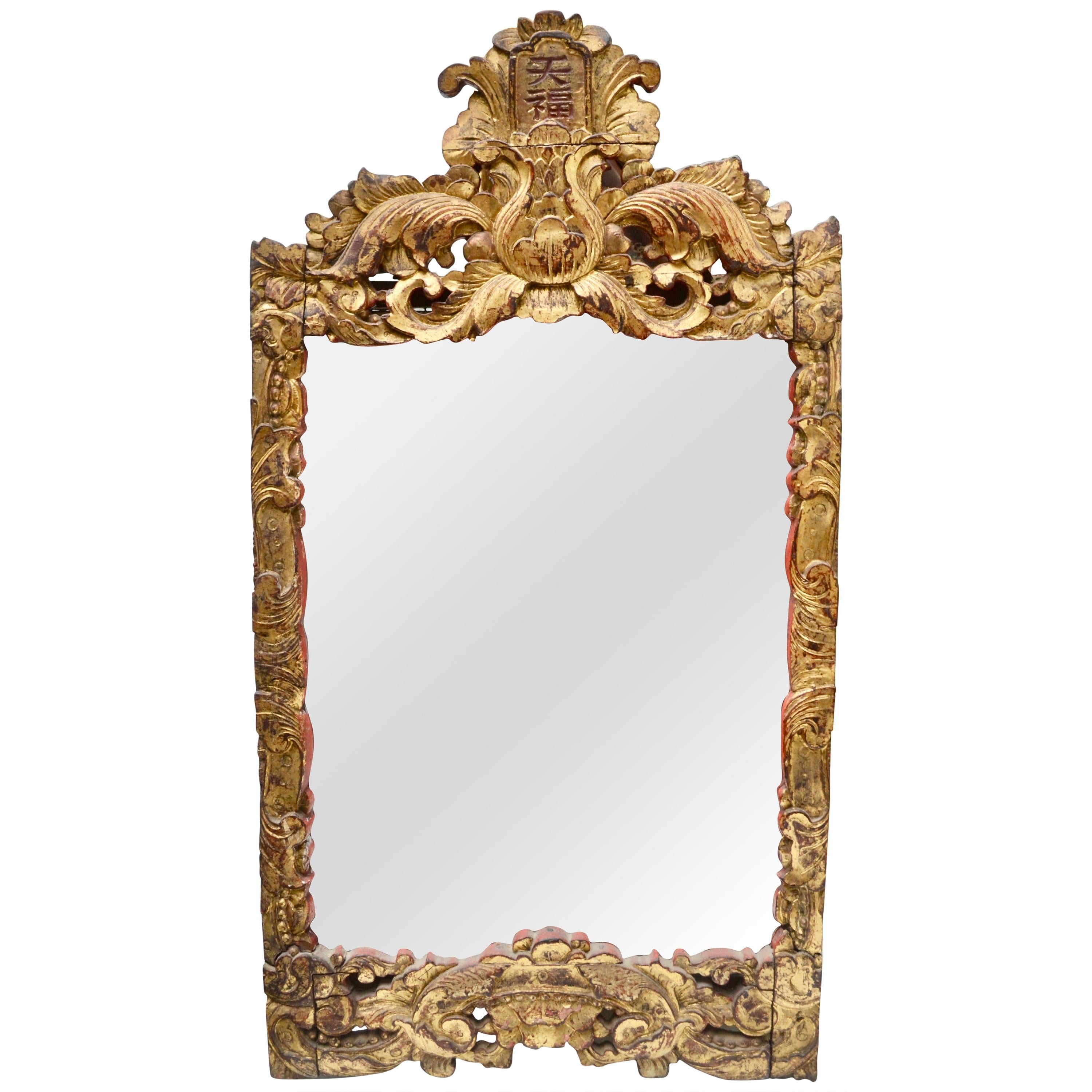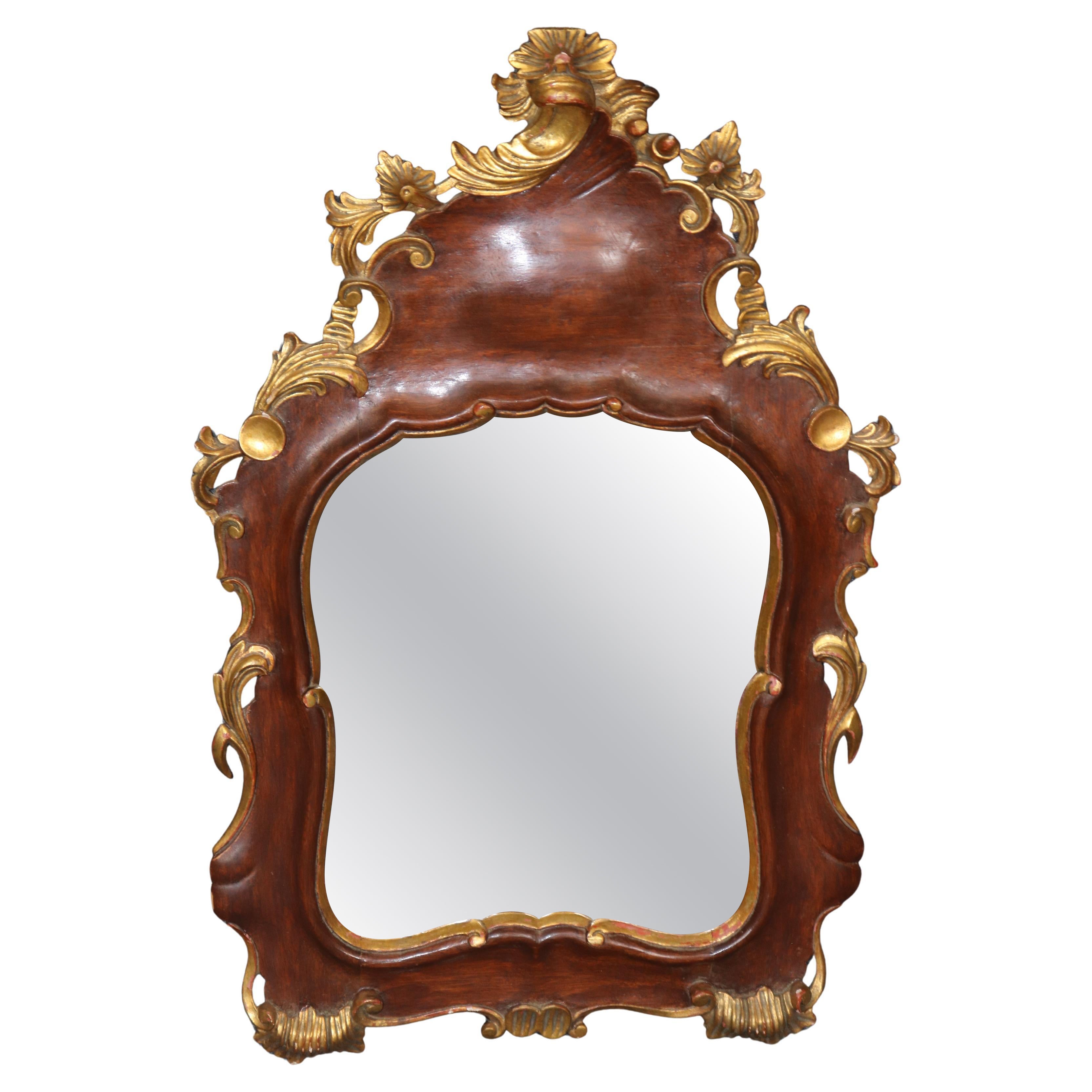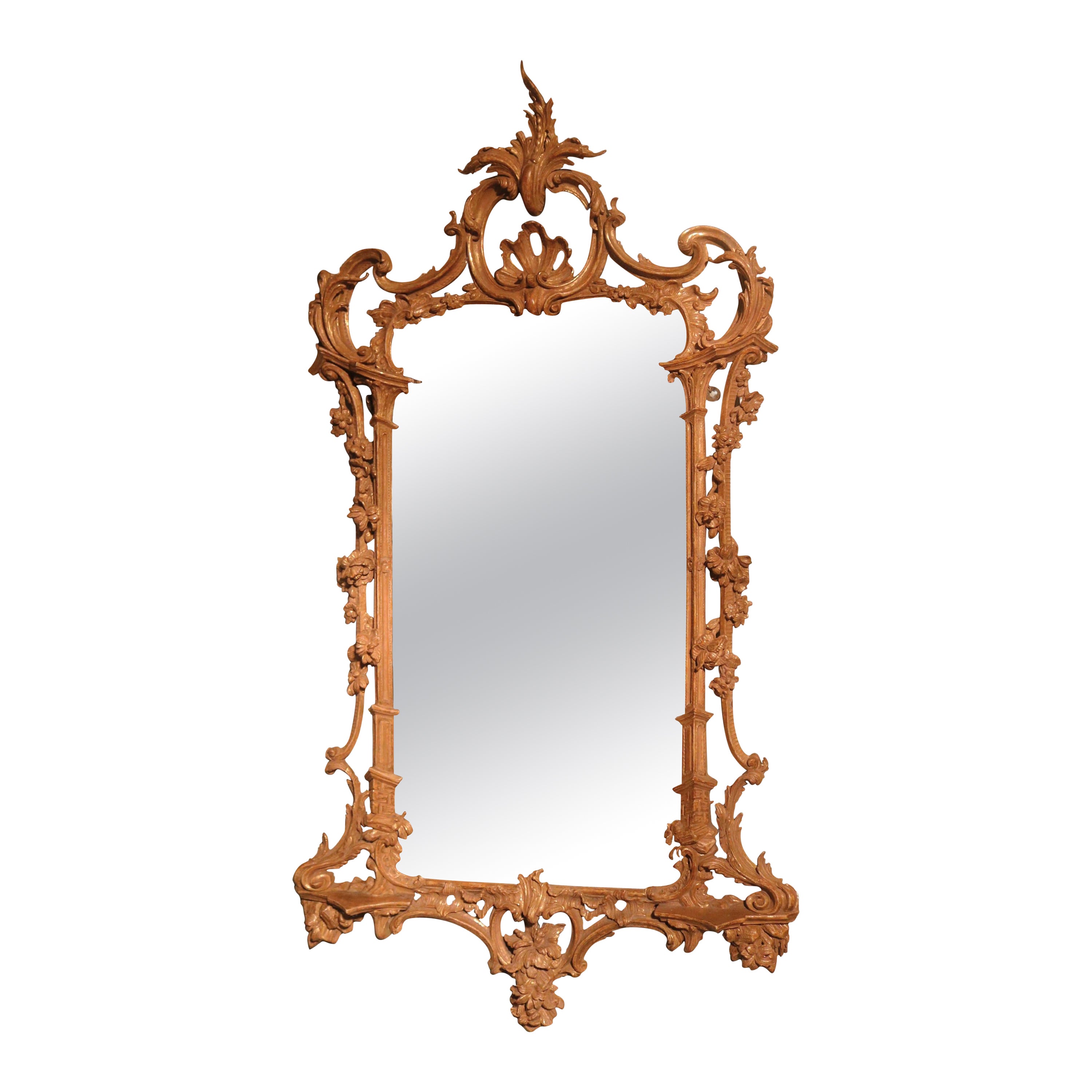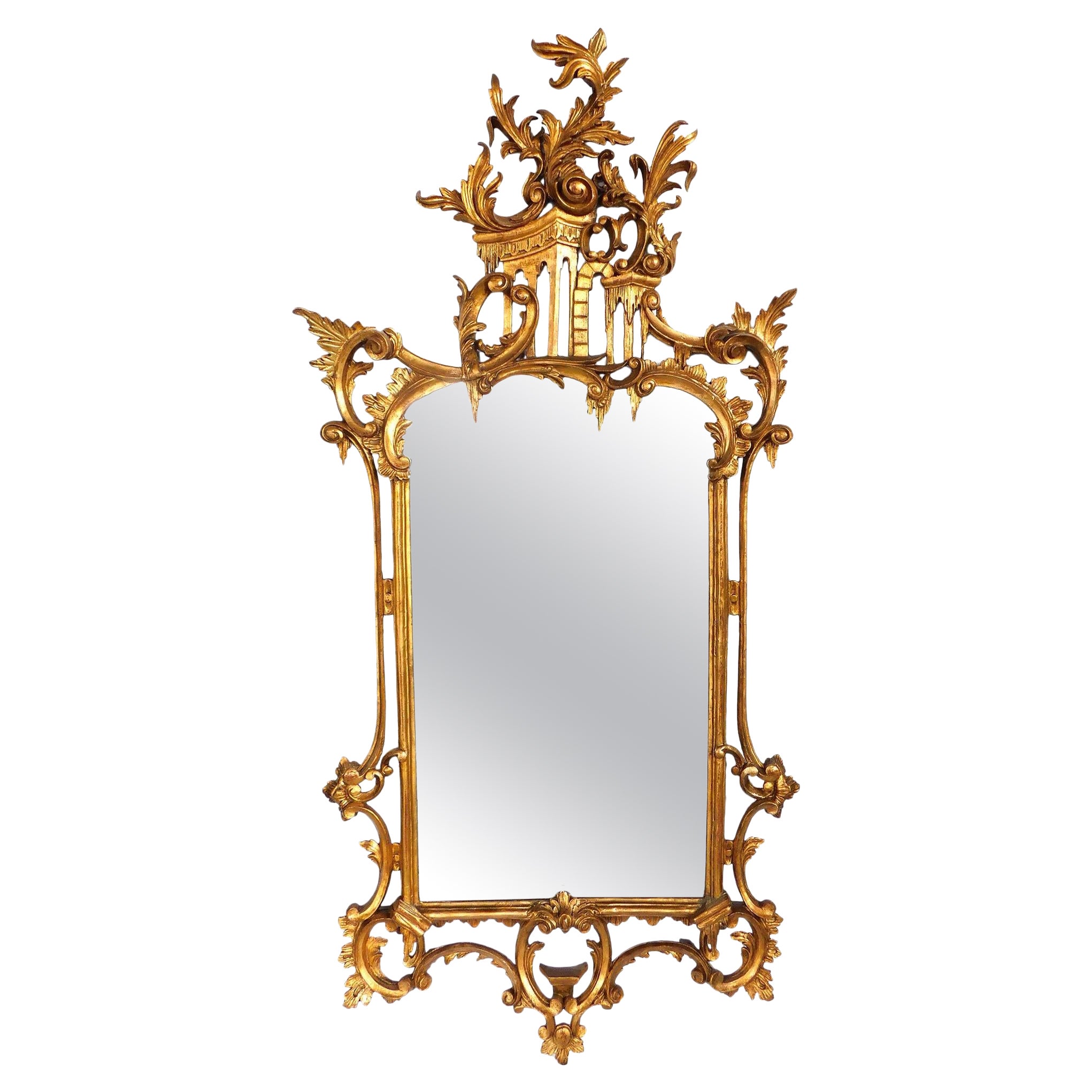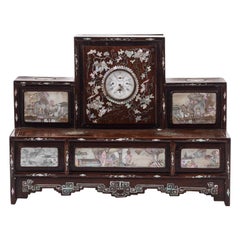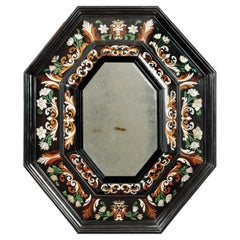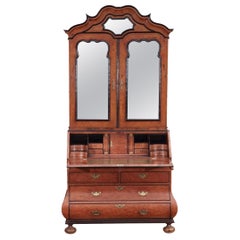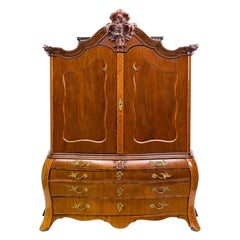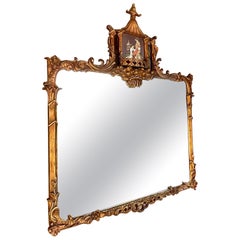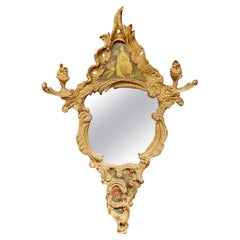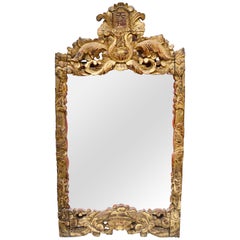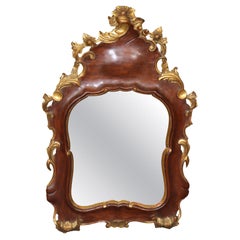Items Similar to Charming carved gilt-wood Chinese export mirror frame watch-stand with Europeans
Want more images or videos?
Request additional images or videos from the seller
1 of 7
Charming carved gilt-wood Chinese export mirror frame watch-stand with Europeans
$17,193.90
£12,776.46
€14,500
CA$23,797.37
A$26,500.26
CHF 13,836.39
MX$321,099.80
NOK 174,491.53
SEK 164,646.51
DKK 110,405.62
About the Item
A charming carved giltwood Chinese export mirror frame with a watch-stand
Canton, Qing Dynasty, early 19th century
H. 65 x W. 34.5 cm
At the top of the frame, two angels are supporting a circle in which a watch is intended to be placed at night. In the left and right uprights, two European figures are carved, holding vases with a large flower, standing on Chinese Foo-dogs.
- Dimensions:Height: 25.6 in (65 cm)Width: 13.59 in (34.5 cm)Depth: 3.94 in (10 cm)
- Style:Qing (Of the Period)
- Materials and Techniques:
- Place of Origin:
- Period:
- Date of Manufacture:Early 19th century
- Condition:Wear consistent with age and use.
- Seller Location:Amsterdam, NL
- Reference Number:1stDibs: LU5458233869102
About the Seller
5.0
Recognized Seller
These prestigious sellers are industry leaders and represent the highest echelon for item quality and design.
Established in 1985
1stDibs seller since 2020
23 sales on 1stDibs
Typical response time: 5 hours
- ShippingRetrieving quote...Shipping from: Amsterdam, Netherlands
- Return Policy
Authenticity Guarantee
In the unlikely event there’s an issue with an item’s authenticity, contact us within 1 year for a full refund. DetailsMoney-Back Guarantee
If your item is not as described, is damaged in transit, or does not arrive, contact us within 7 days for a full refund. Details24-Hour Cancellation
You have a 24-hour grace period in which to reconsider your purchase, with no questions asked.Vetted Professional Sellers
Our world-class sellers must adhere to strict standards for service and quality, maintaining the integrity of our listings.Price-Match Guarantee
If you find that a seller listed the same item for a lower price elsewhere, we’ll match it.Trusted Global Delivery
Our best-in-class carrier network provides specialized shipping options worldwide, including custom delivery.More From This Seller
View AllA Chinese huanghuali, wumu and mother-of-pearl watch holder
Located in Amsterdam, NL
Canton, 2nd half 19th century
H. 22.5 x W. 30 x D. 12.5 cm
The pocket watch, an antique Swiss triple calendar Moon phace pocket watch in gunmetal case, dating from around 1860-1900, is marked Acier Garanti, Oxidage Inalterable, and is numbered. The stand, made of huanghuali (Dalbergia odorifera...
Category
Antique 19th Century Chinese Chinese Export Furniture
Materials
Wood
A mirror with the Medici coat-of-arms by Leonardo van der Vinne (act. 1659-1713)
Located in Amsterdam, NL
Florence, late 17th-century
The octagonal mirror decorated with scrolling vines and flowers the top and bottom each decorated with the Medici coat-of-arms in opposite colours, the ...
Category
Antique Late 17th Century Italian Wall Mirrors
Materials
Bone, Mother-of-Pearl, Ebony, Teak
A fine Dutch 18th-century oak and amboyna bureau cabinet with mirror doors
Located in Amsterdam, NL
The Hague, circa 1760
Oak, veneered with amboyna root, brass fittings with lacquer gilding.
H: 242 cm. , W: 120 cm. , D: 62 cm.
Provenance: Private collection Germany
The bureau cabinet is a piece of furniture that has become very popular in the Netherlands since the early 18th century. This example was made around 1760. The single curved base cabinet...
Category
Antique 18th Century Dutch Baroque Cabinets
Materials
Brass
A Superb Dutch 18th-century Rococo cabinet atributted to Matthijs Franses
Located in Amsterdam, NL
Dutch rococo cabinet atributted to Matthijs Franses, in the style of Abraham Roentgen
The Hague, circa 1765
266 high, 193 wide and 70 cm deep
Oak an...
Category
Antique 18th Century Dutch Rococo Cabinets
Materials
Brass
Exceptional Surinam-Themed Amsterdam Long-Case Clock
Located in Amsterdam, NL
A Surinam-themed Amsterdam long-case clock
The Netherlands, 1746-1756, dial signed Nicolaas Weylandt/Amsterdam
The case of the clock is made of Rio palisander veneer and snakewood, with the arch showing a painted scene of the harbour of Paramaribo, Fort Zeelandia and Dutch ships in anchorage, the spandrels decorated with figural representations of the four continents, the centre of the dial painted with Mercury, the god of trade, seated on a bale signed VCS (Vereenigde Compagnie Suriname), and one of the barrels bearing the initials “RBS,” on the left the river god of the Surinam river, with a Dutch three-master in the background.
Measures: H 259 x W 60 x D 35 cm (case)
Diameter 32 cm (clock dial)
This exceptionally rare long-case clock probably was ordered by one of the many wealthy families living along the Amsterdam canals that owned or had shares in plantations in Surinam. It’s a successful marriage of
the work of an accomplished 18th century Amsterdam clockmaker, a Dutch cabinetmaker working with exotic tropical timbers, a woodcarver familiar with both Dutch Rococo design and Surinamese iconography, and
a painter with knowledge, whether first-
hand or through other visualisations, of the Paramaribo waterfront. In the production of this Gesamtkunstwerk, only the name of the clockmaker is known: Nicloaas Weylandt (circa 1700-1754), who had a business situated on the Nieuwendijk near the Haarlemmersluis in Amsterdam from 1742 until his death.
The case is made of imported timbers from Surinam; Rio-palisander and snakewood. A very similar clock-case, veneered in walnut,
is illustrated in J. Zeeman, De Nederlandse staande klok...
Category
Antique Mid-18th Century Dutch Dutch Colonial Grandfather Clocks and Lon...
Materials
Palisander
Pair of Colonial Lacquered and Gilt Teak Torchères or Candle Stands
Located in Amsterdam, NL
A pair of Indonesian lacquered and gilt teak torchères or candle stands
Probably Jakarta (Batavia), 18th century
Each on three spreading feat with human hand-shaped foot, knobb...
Category
Antique 18th Century Indonesian Dutch Colonial Furniture
Materials
Giltwood
You May Also Like
Vintage Regency Hand Carved Gilt Pagoda Mirror
Located in West Palm Beach, FL
Incredible vintage hand carved Mirror. The coveted Pagoda style with a beautiful hand painted Chinoiserie scene across the top. Acquired from a Palm Beach estate.
Category
Mid-20th Century North American Chinoiserie Wall Mirrors
Materials
Mirror, Paint
A scrolled mirror in carved and patinated molded wood painted with chinese XIXè
Located in Saint-Ouen, FR
A scrolled mirror in carved and patinated molded wood decorated with foliage scrolls. The upper part is painted with Chinese figures, and the lower part is adorned with flowers.
Rege...
Category
Antique 19th Century French Louis XV Wall Mirrors
Materials
Mirror, Beech
Small Chinese Temple Giltwood Mirror
Located in Vancouver, British Columbia
A small high relief hand carved temple giltwood framed mirror with some with a Chinese inscription at the top of the frame that says "Fortune From Heaven".
Category
Mid-20th Century Chinese Chinese Export Wall Mirrors
Materials
Giltwood
Small Antique Italian Rococo Style Carved Gilt Wood Mirror
Located in Swedesboro, NJ
Dimensions - H: 29 1/2 in W: 19 1/2 in D: 2 1/2 in
This exquisite early 20th century Italian Rococo-style wall mirror is a refined example of old-world craftsmanship in a charming,...
Category
Early 20th Century Italian Rococo Wall Mirrors
Materials
Mirror, Wood, Giltwood
18th Century Carved Giltwood Chinese Chippendale Mirror
Located in London, GB
A fine quality crisply carved Mid-18th Century giltwood Mirror, having c-scroll acanthus and flower decoration throughout, contained in 'Chinese pagoda' frame.
Category
Antique Mid-18th Century English Chinese Chippendale Pier Mirrors and Co...
Materials
Giltwood
Well-Carved English Chippendale Style Gilt-Wood Mirror with Bold Crest
Located in San Francisco, CA
The exuberantly carved pagoda crest surrounded by lively acanthus leaves, c-scrolls and grotto motifs cascading down to an openwork frame.
Category
Antique Late 19th Century English Chinese Chippendale Wall Mirrors
Materials
Giltwood
$6,760 Sale Price
20% Off
More Ways To Browse
Mirror On Stand
Wall Watches
Chinese Large Stand
Antique Watch Stand
Antique Chinese Foo Dogs
Chinese Export Dogs
Carved Foo Dogs
Large Foo Dogs
19th Century Chinese Foo Dogs
Large Chinese Foo Dogs
Wood Foo Dogs
Antique Chinese Wood Vase Stand
Carved Wood Foo Dogs
Gilt Wood Foo Dogs
Wood Foo Dogs Large
Water Gilt Mirror
18th Century Chippendale Mirror
Antique Repousse Mirror
